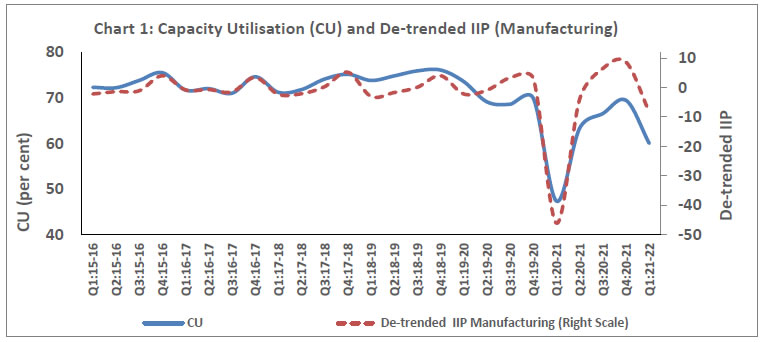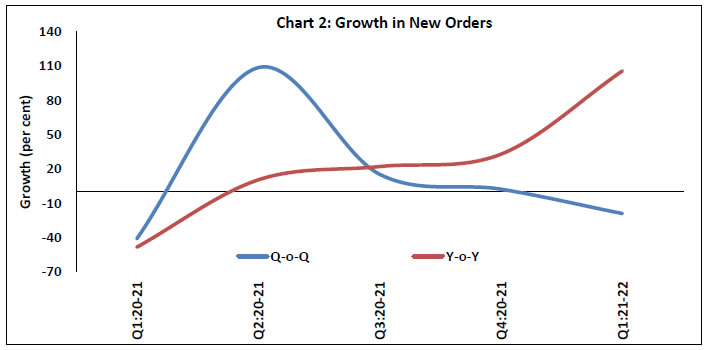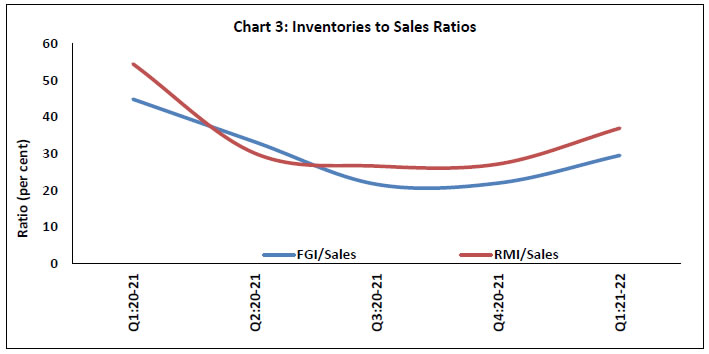 IST,
IST,
OBICUS Survey on the Manufacturing sector for Q1:2021-22
Today, the Reserve Bank released the results of the 54th round of the quarterly Order Books, Inventories and Capacity Utilisation Survey (OBICUS), which provides a snapshot of demand conditions in India’s manufacturing sector1 during April-June 2021. The survey covered 671 manufacturing companies. Highlights:


 Note - Please see the excel file for time series data. ANNEX 1: Data Tables 1 The survey responses are voluntary. Results of the previous survey round were released on the Bank’s website on August 06, 2021. 2 From this round of the survey, sequential (Q-o-Q) and annual (Y-o-Y) growth in order books are estimated by using the data reported by those companies which are common in OBICUS response in the latest quarter, one quarter ago and the corresponding quarter a year ago (i.e., three survey rounds). Up to the last round, such calculations were based on the companies which reported for the latest nine OBICUS rounds, which led to exclusion of the companies that missed reporting even in one of the latest nine rounds. Estimates of order book growth are revised since the 50th survey round (i.e., Q1:2020-21). 3 From this survey round, the methodology of computation of ‘inventory to sales’ ratio is revised by compiling it in two stages: (i) at the first stage, the industry-level ratios are calculated from OBICUS responses; and (ii) the final ratio is derived in the second stage as a weighted average of the industry-level ratios, using the Gross Value Added (GVA) weights from the Annual Survey of Industries (ASI) of the National Statistical Office (NSO). The ratios are now based on the full set of OBICUS responses for each survey round. Up to the last round, the ratios were estimated at aggregated-level by considering only those companies which responded in the latest five OBICUS rounds, which led to exclusion of the companies that missed reporting even in one of the latest five rounds. Estimates of these ratios have been revised since the 50th survey round (i.e., Q1:2020-21). |
पेज अंतिम अपडेट तारीख:

















